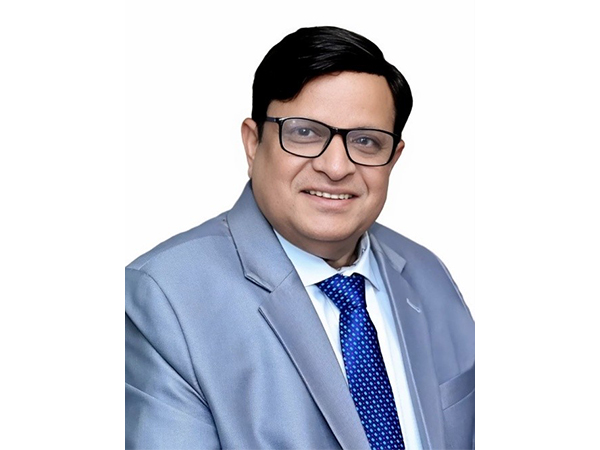VMPL
New Delhi [India], May 31: India’s healthcare system stands at a critical juncture, strained by a maternal mortality rate of 97 per 100,000 live births and an infant mortality rate of 28 per 1,000 live births, according to recent data. Millions lack access to quality care, especially in rural areas where 64% of the population resides. That’s when the Government of India must transform its role from a service provider to a facilitator, mediator and regulator as several initiatives have been taken to improve the healthcare infrastructure in India like Ayushman Bharat Yojana to Janani Suraksha Yojana etc.
Dr. Amod Sachan, founder chairman of Shekar Hospital, Hind Institute of Medical Sciences, and Hind Cancer Institute in Lucknow, sees this as a transformative opportunity. “By incentivizing private investment in rural areas, we can bring quality care to millions who currently lack access,” he suggests. His hospitals, already serving diverse populations, exemplify how private institutions can thrive while addressing community needs. Dr. Sachan’s perspective highlights the potential for this model to not only improve access but also elevate the standard of care across the country, making it a compelling endorsement from one of India’s healthcare pioneers.
Imagine a future where every Indian–whether in bustling Mumbai or a remote Rajasthan village–can visit a doctor without fear of crippling costs. This vision drives a revolutionary plan centered on universal health insurance. Every citizen would be covered under a government-regulated scheme, with premiums tied to income and integrated into tax payments. Using the Aadhaar card system–a unique ID linking citizens to services–this coverage would become as routine as vehicle insurance, ensuring no one is left behind.
A bold new proposal promises to transform this reality by introducing universal health insurance, redefining the government’s role, and harnessing private sector expertise to deliver equitable healthcare nationwide.
The plan doesn’t stop at coverage. It reimagines the government’s role, shifting it from a direct provider of healthcare to a regulator and facilitator. This change would unleash the private sector’s potential, encouraging it to extend services to rural areas where care is scarce. Today, 70% of medical services come from private providers, but they’re mostly urban-based, leaving rural communities dependent on overstretched public facilities or unqualified practitioners. With insurance reimbursements footing the bill, private clinics and hospitals would have a clear incentive to set up shop in these underserved regions, narrowing the urban-rural gap.
Affordability and transparency are also key. The proposal tackles unregulated pricing–a major burden for patients–by introducing standardized charges. A regulatory body, like the National Accreditation Board for Hospitals & Healthcare Providers (NABH), would set rates based on a doctor’s qualifications, experience, and the facility’s type. This means no more surprise bills, just fair and predictable costs for everyone.
Quality isn’t overlooked either. All healthcare providers, from small clinics to major hospitals, would need mandatory certification to operate. Diagnostic centers and blood banks would face the same scrutiny, ensuring reliable, high-standard care across the board. “This could be a game-changer,” says a health policy expert, reflecting the optimism around a system that prioritizes both access and excellence.
The ripple effects could transform India’s economy and society. Affordable, quality healthcare could make India a top destination for medical tourism, drawing patients from abroad and boosting foreign exchange. Building new facilities would create jobs–not just for doctors and nurses, but for administrators and support staff too. Aligning with global goals, this reform could help India meet the Sustainable Development target of reducing maternal mortality below 70 per 100,000 live births by 2030.
Getting there won’t be easy. Rolling out this ambitious plan demands careful coordination. The government must craft strong laws, set up a dedicated regulatory authority, and design inclusive insurance schemes–possibly through public-private partnerships. Voices from all corners–patients, doctors, and investors–must shape the process to ensure it works for everyone. A unified system, overseen by central and state governments, would keep quality, pricing, and delivery consistent nationwide, while data from the insurance network could guide smarter health policies.
This isn’t just a fix for today’s problems–it’s a vision for tomorrow. By bridging the urban-rural divide, standardizing care, and tapping into private sector strengths, this proposal could build a healthcare system that’s fairer and more efficient. For doctors and the health industry, it offers a structured market with clear rules and new opportunities to serve growing demand. If executed well, India could not only heal its own divides but also step up as a global leader in healthcare innovation.
(ADVERTORIAL DISCLAIMER: The above press release has been provided by VMPL. ANI will not be responsible in any way for the content of the same)
Disclaimer: This story is auto-generated from a syndicated feed of ANI; only the image & headline may have been reworked by News Services Division of World News Network Inc Ltd and Palghar News and Pune News and World News
HINDI, MARATHI, GUJARATI, TAMIL, TELUGU, BENGALI, KANNADA, ORIYA, PUNJABI, URDU, MALAYALAM
For more details and packages
















